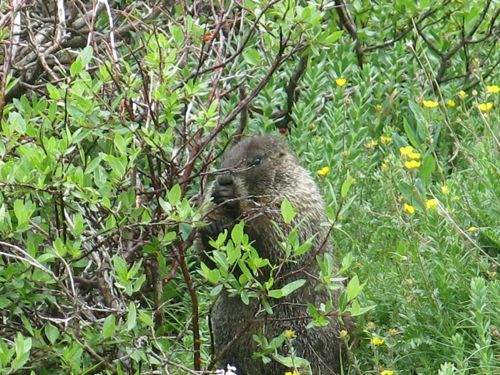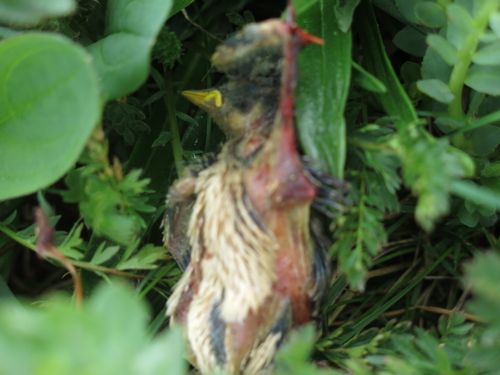After climbing Colorado's 14,003 foot tall Mount Huron, I stumbled upon a surprising natural interaction between a Marmot and a songbird known as the Water Pipit. I am going to call it a crime scene, because of the heinous nature of the act that was committed by the marmot, and the extreme distress exhibited by the victim, the mother pipit. I first noticed something going on when I heard the repeated alarm calls of a small tan colored bird, amid a field of beautiful wildflowers. I recognized the bird as a pipit, and knowing that they nest only on the treeless tundra, I was intrigued. I figured that some animal must be threatening the bird's nest, so I watched for a minute. Something was going on here, and I wanted the solve the mystery.


Having spent several unsuccessful days looking for pipit nests as part of the Colorado Breeding Bird Atlas project, I moved in to take a look. What I found surprised me: a half eaten baby pipit! The marmot was a baby killer! The mother pipit was trying desperately to save the other three chicks- still featherless in the nest. I had caught this grizzly marmot in the act of eating babies! Nice cuddly furry marmots-bah! They are cold blooded killers.


I guess everyone does what it takes to survive the harshness of the tundra. After all, it wasn't far from here that in 1874, Alfred Packer left his own carnage.
- < prev
- 32 of 32


Comments